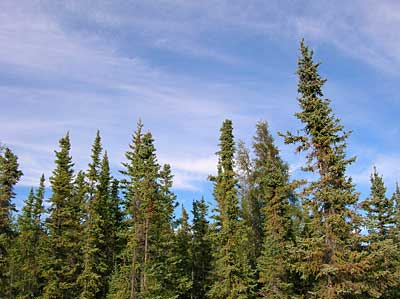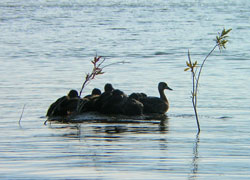 |
Thursday evening, Aug. 18
We fly out from Norman Wells on the afternoon scheduled jet flight to Yellowknife. The man sitting next to me is friendly and we chat throughout the flight. He works for a global business that helps the oil company to find more oil and gas in their existing wells. An Indonesian, he learned his trade as a young man working the offshore oil rigs near Singapore. Eventually the company transferred him to Canada where he has lived for the last fifteen years. When he comes to Norman Wells from his home near Edmonton, it is for stints measured in weeks or months. He tells me his family is used to his regular absences. It's just a way of life for him and many others who work in the Northwest Territories but make their homes elsewhere.
When I ask his opinion about the proposed Mackenzie Valley pipeline he seems surprised. "Isn't there already a pipeline," he says with a puzzled expression. Does he think that the oil development here in Norman Wells has had any significant impact on the wildlife I ask. "No, no," he replies, "not much."
That evening in Yellowknife I take a last walk--we will fly out in the morning--while Nick has one last round of intervews. Unlike in Norman Wells, hundreds of miles to the north, the weather here is glorious--thin streaky clouds against brilliant blue skies. I find a family of recently-fledged Orange-crowned Warblers and several Palm and Yellow-rumped Warblers in a patch of spruces and pines along a jogging trail. On a small lake near the Legislative Assembley building, I come across a female Greater Scaup sitting on a hummock surrounded by her nearly full-sized brood. Funny, to think of this bird that symbolizes the tenuous tether between the Canadian Boreal and the U.S. wintering regions, innocently sitting here outside a building where its future will be debated and decided.
 |

